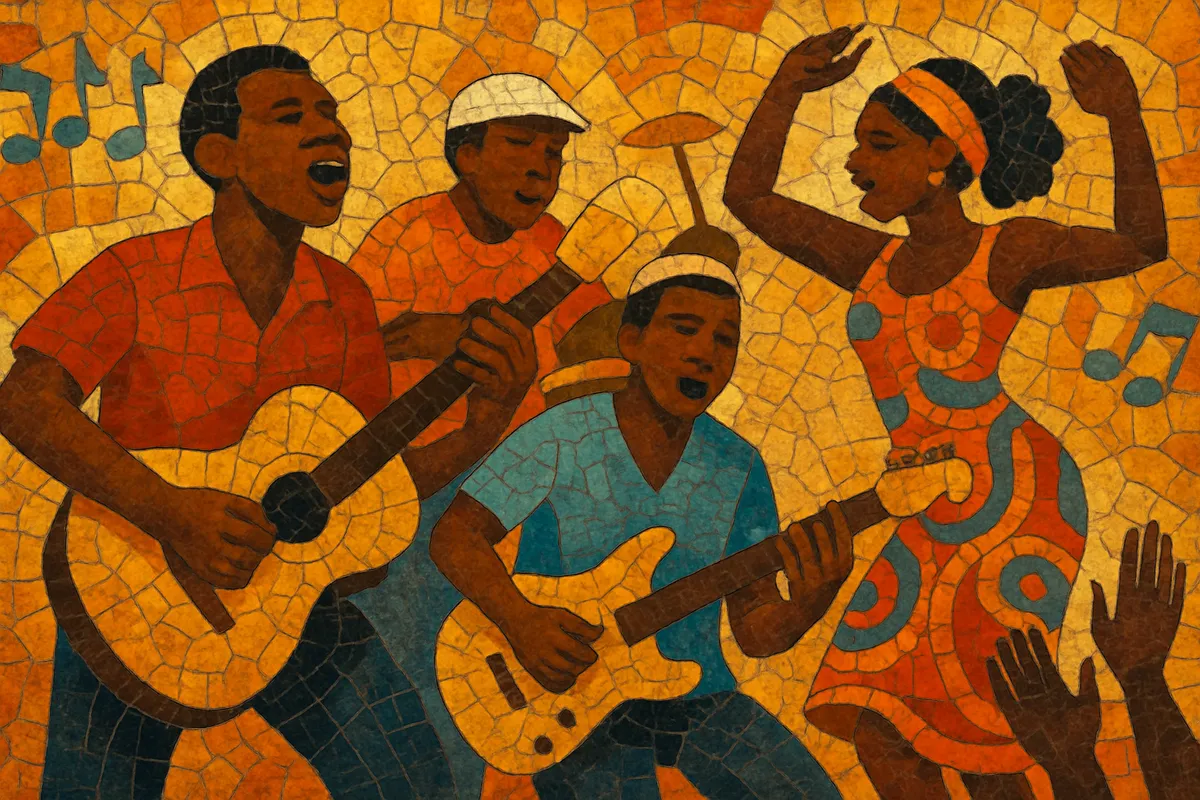
Salegy is a high‑energy dance music from northern Madagascar that electrifies older coastal rhythms into a fast 6/8 or 12/8 groove. The sound is driven by interlocking electric guitars that mimic zither and valiha patterns, syncopated bass lines, and a propulsive drum kit, often accented by handclaps, whistles, and call‑and‑response vocals.
Typically clocking around 140–160 BPM, salegy favors bright, clean guitar tones playing cyclical ostinati, while singers deliver exuberant, melismatic lines in Malagasy (especially northern dialects). The music is celebratory and communal, designed for long dance sections with breakdowns and instrumental vamps that keep the floor moving.
Salegy grows out of northern Malagasy coastal traditions and communal dance forms that use handclaps, call‑and‑response singing, and lilting 6/8 rhythms. These roots provided the melodic contours, responsorial vocals, and cyclical rhythmic cells that later became defining traits once bands began electrifying the sound.
In the 1970s, northern bands began adapting traditional forms to electric guitar, bass, and drum kit, synthesizing local rhythmic cells with pan–Indian Ocean dance currents and Congolese guitar music. The clean, interlocking guitar approach and fleet, dance‑forward drumming crystallized the modern salegy template. Nightclubs in Diego‑Suarez (Antsiranana) and the north helped standardize the repertoire and performance practice.
Artists like Jaojoby pushed salegy to national prominence, refining the bright guitar ostinati, rapid vocal lines, and extended dance breaks. Recordings and touring spread the style beyond the north, making it a flagship dance music of Madagascar and a staple at weddings, festivals, and clubs.
Salegy remains a dominant Malagasy dance style, now heard with keyboards, programmed percussion, and larger horn or backing‑vocal sections. It frequently cross‑pollinates with regional styles across the Mozambique Channel and the Indian Ocean. Modern acts keep the core 6/8 drive while experimenting with studio polish, pop hooks, and hybrid club aesthetics.

